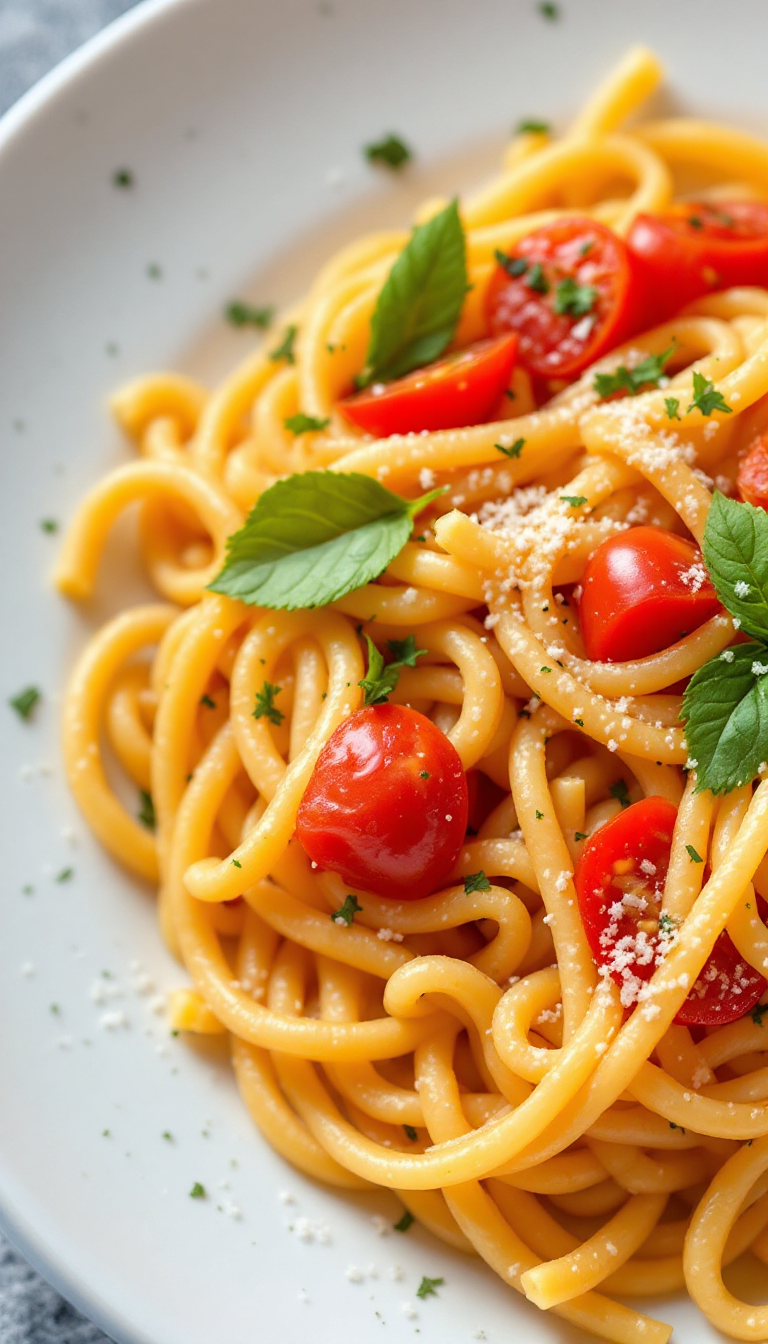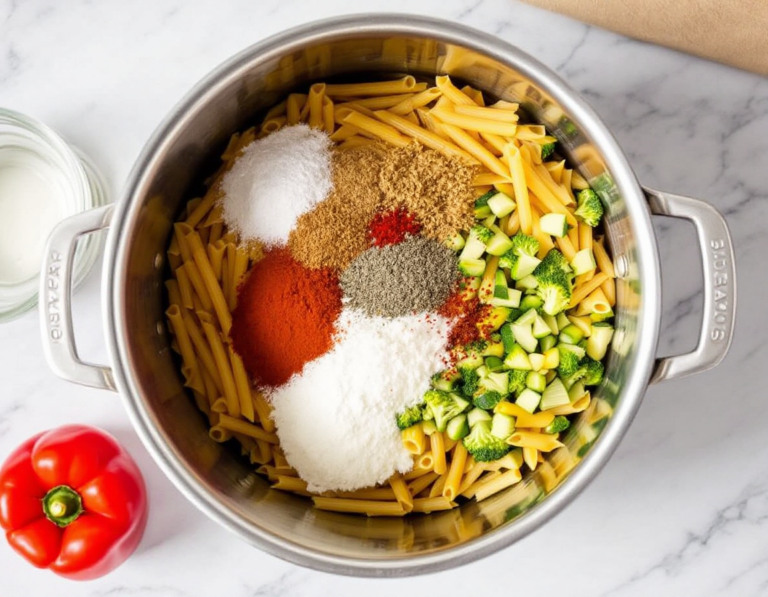
Pasta—oh, the joy it brings, like an old friend you can’t wait to see. This quick and creamy veggie pasta? It’s the hug you need after a long day. Layered with vibrant veggies, it’s a dish that’s both comforting and surprising, like finding an unexpected $20 in your pocket.
Steps
- Place all ingredients, including pasta, vegetable bouillon powder, onion and garlic powders, salt, pepper, paprika, minced garlic, chopped onion, broccoli, zucchini, red pepper, water, passata, and coconut milk into a large pot or deep-sided skillet. Mix everything thoroughly and bring it to a boil over high heat.
- Once boiling, lower the heat to a simmer and cook for about 12 minutes, stirring occasionally to prevent sticking. Adjust the heat and cooking time based on the pasta type and shape, ensuring it cooks to an al-dente texture.
- Once the pasta is done, taste and adjust seasonings as needed. Serve the pasta in bowls, optionally garnished with fresh herbs like parsley, and enjoy immediately.

Ingredients
- 8 oz (225 g) dry pasta, gluten-free or regular
- ½ tablespoon vegetable bouillon powder
- 1 teaspoon onion powder
- 1 teaspoon garlic powder
- 1 teaspoon salt
- ½ teaspoon black pepper
- ½ teaspoon paprika
- 3 garlic cloves, minced
- 1 small to medium onion (120 g), red or yellow, chopped
- 1 ? cup (120 g) broccoli florets
- 1 cup (125 g) zucchini, chopped
- 1 cup (85 g) red pepper, chopped
- 2 cups (480 ml) water
- 1 ¼ cup (300 g) passata
- ½ cup (120 g) canned coconut milk
FAQ
- Can I use a different type of milk instead of coconut milk for this recipe?
- Yes, you can substitute coconut milk with other vegan cream alternatives like oat or soy cream. However, this may alter the flavor slightly.
- What types of pasta work best for this recipe?
- You can use any dried pasta, regular or gluten-free. Shorter pasta shapes like fusilli are recommended, but if using spaghetti or linguine, consider breaking them in half for easier cooking.
- Is it possible to freeze leftovers of this one-pot pasta?
- While you can freeze this dish for up to two months, it’s generally not recommended as the pasta might become mushy when thawed. If you choose to freeze it, store it in an airtight container and thaw in the fridge before reheating.
- How can I add more protein to this vegan pasta dish?
- For added protein, you can mix in legumes such as chickpeas or white beans. Alternatively, sauté tofu or soy curls before adding them back to the dish right before serving.
- What can I do if the sauce becomes too thick or too thin?
- If the sauce is too thick, add a splash of dairy-free milk or vegetable stock to thin it out. Conversely, if the sauce is too thin, you can thicken it with a cornstarch slurry.
Tips
- Stir Regularly: To prevent the pasta from sticking to the pot or clumping together, make sure to stir the ingredients occasionally throughout the cooking process.
- Adjust to Taste: Be prepared to adjust the cooking time based on the type and size of pasta you are using, as well as your preference for al dente or softer pasta.
- Vegetable Flexibility: Feel free to substitute the vegetables used in the recipe with any fresh, frozen, or canned veggies you have on hand, making this dish adaptable to seasonal availability and personal preferences.
- Control the Sauce Consistency: If the sauce becomes too thick, add a splash of dairy-free milk or vegetable stock to thin it out. Conversely, if the sauce is too thin, you can thicken it with a cornstarch slurry.
Equipment
- Large pot or deep-sided skillet – If someone does not already own a suitable pot or skillet for making one-pot dishes, they might need to purchase one.
- Chopping board – For chopping vegetables and other ingredients.
- Knife – A good quality knife for chopping vegetables, garlic, and onion.
